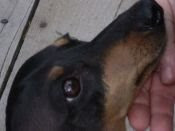
Myspace Glitter Graphics
Thank you, Mary, for this wonderful award! :-)
| You Are a Good Friend Because You're Supportive |
 You are almost like a life coach for your best friends. You give them help when they need it... but you also know when to give them a push. People tend to rely on you for moral support and advice. You've probably always been mature for your age, so this is a role that's you're comfortable with. A friend like you is one of the rarest kinds. You are both a good mentor and companion. Your friends need you most when: They are confused or worried. You really can't be friends with: Someone who only wants to complain. Your friendship quote: "The only way to have a friend is to be one." |
 We had our first snow on Tuesday, the 20th. There was only an inch or two accumulation. Since it remained cold for a few days, the snow coated the ground until Thanksgiving. It seems snow and cold temperatures made the birds very hungry. They were flitting back and forth between the bird feeders and the trees all day.
We had our first snow on Tuesday, the 20th. There was only an inch or two accumulation. Since it remained cold for a few days, the snow coated the ground until Thanksgiving. It seems snow and cold temperatures made the birds very hungry. They were flitting back and forth between the bird feeders and the trees all day.  It was later in the day when I took these photos so it was getting dusk and the birds had gone, except for one little chickadee. He traveled between the feeder and the birch tree in the photo above. He must have been feeling a little insecure. Instead of flying directly between the two, he would disappear into the small pines in the walkway to emerge a few minutes later.
It was later in the day when I took these photos so it was getting dusk and the birds had gone, except for one little chickadee. He traveled between the feeder and the birch tree in the photo above. He must have been feeling a little insecure. Instead of flying directly between the two, he would disappear into the small pines in the walkway to emerge a few minutes later. It was a bit chilly in the house. Oscar, our dachshund, pulled a couch pillow down over himself. His way of saying, "Turn up the heat!"
It was a bit chilly in the house. Oscar, our dachshund, pulled a couch pillow down over himself. His way of saying, "Turn up the heat!"
| What Your Favorite Color Purple Says About You: |
 |





